NCERT Solutions for Class 9 English Beehive Chapter 1 – The Fun They Had
NCERT Solutions for Class 9 English Chapter 1 – The Fun They Had are essential for understanding futuristic education and technology’s role in learning, as per the CBSE curriculum. These well-structured answers help students grasp key ideas about mechanical schooling, the contrast with present-day classrooms, and the author’s imagination. Designed as per the latest syllabus, these solutions strengthen comprehension and analytical thinking. Ideal for revision and practice, they improve interpretation skills and make a valuable study tool for scoring well in Class 9 English exams.
NCERT Solutions For Class 9 English (Beehive) – The Fun They Had – Exercise Images
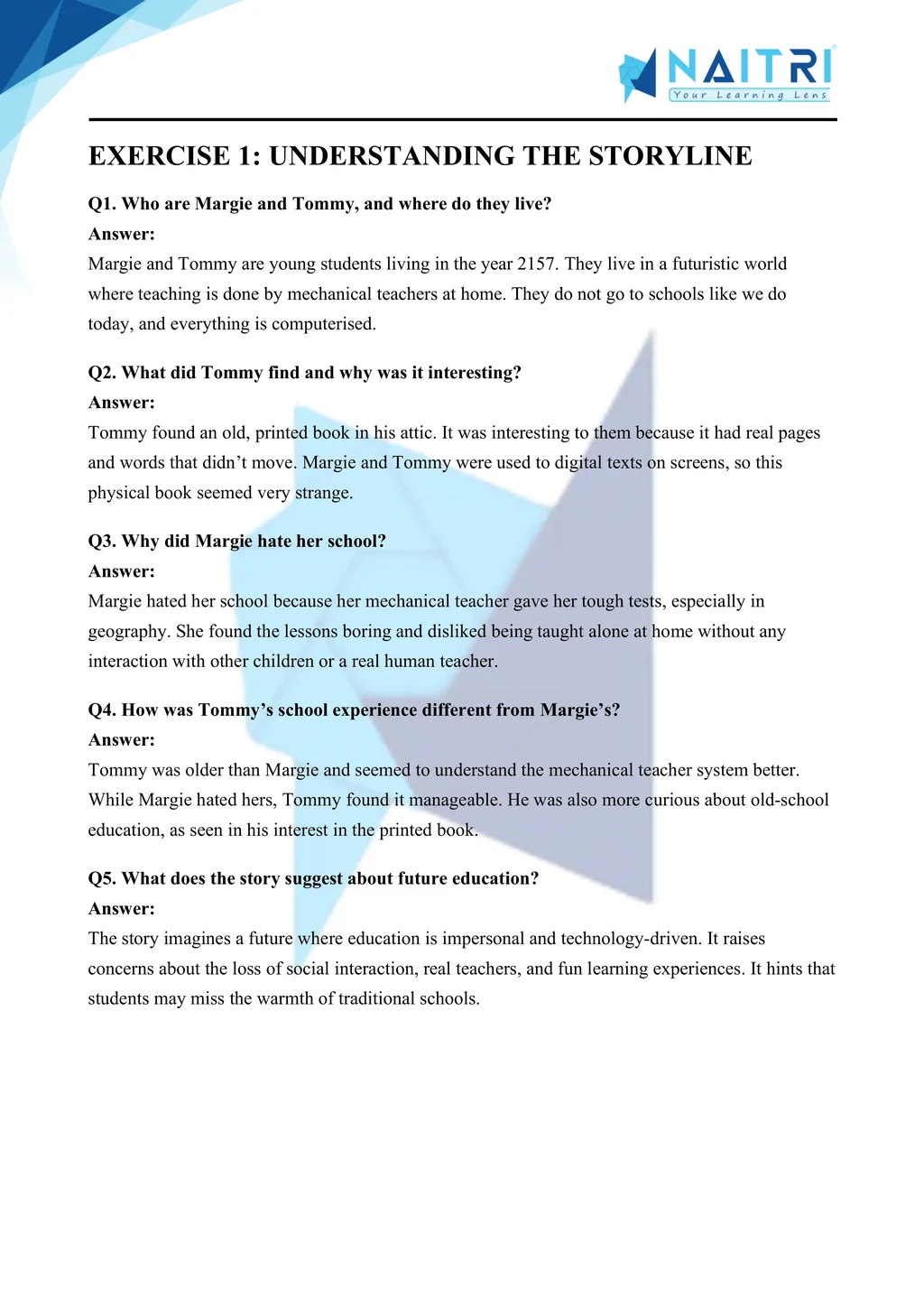
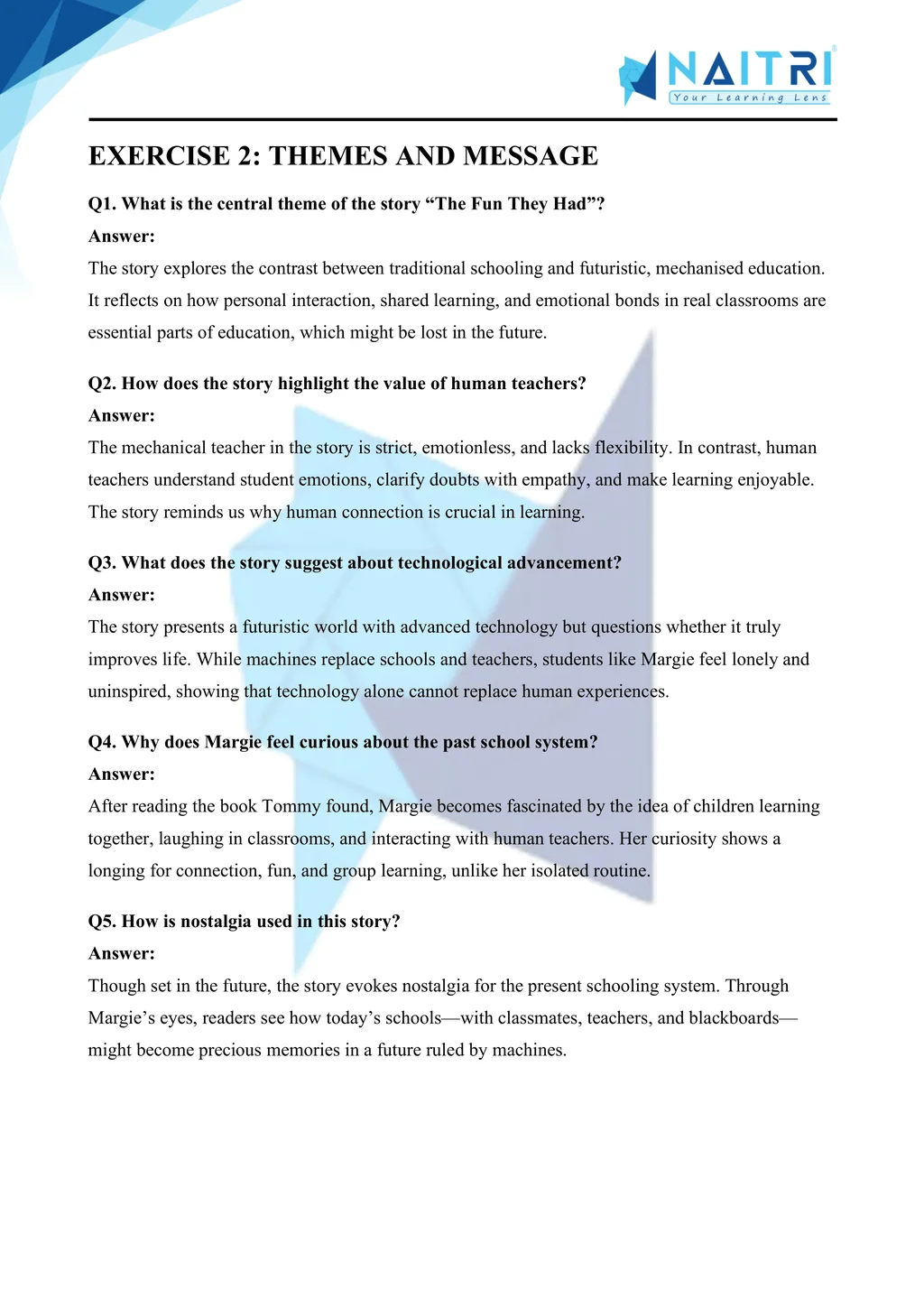
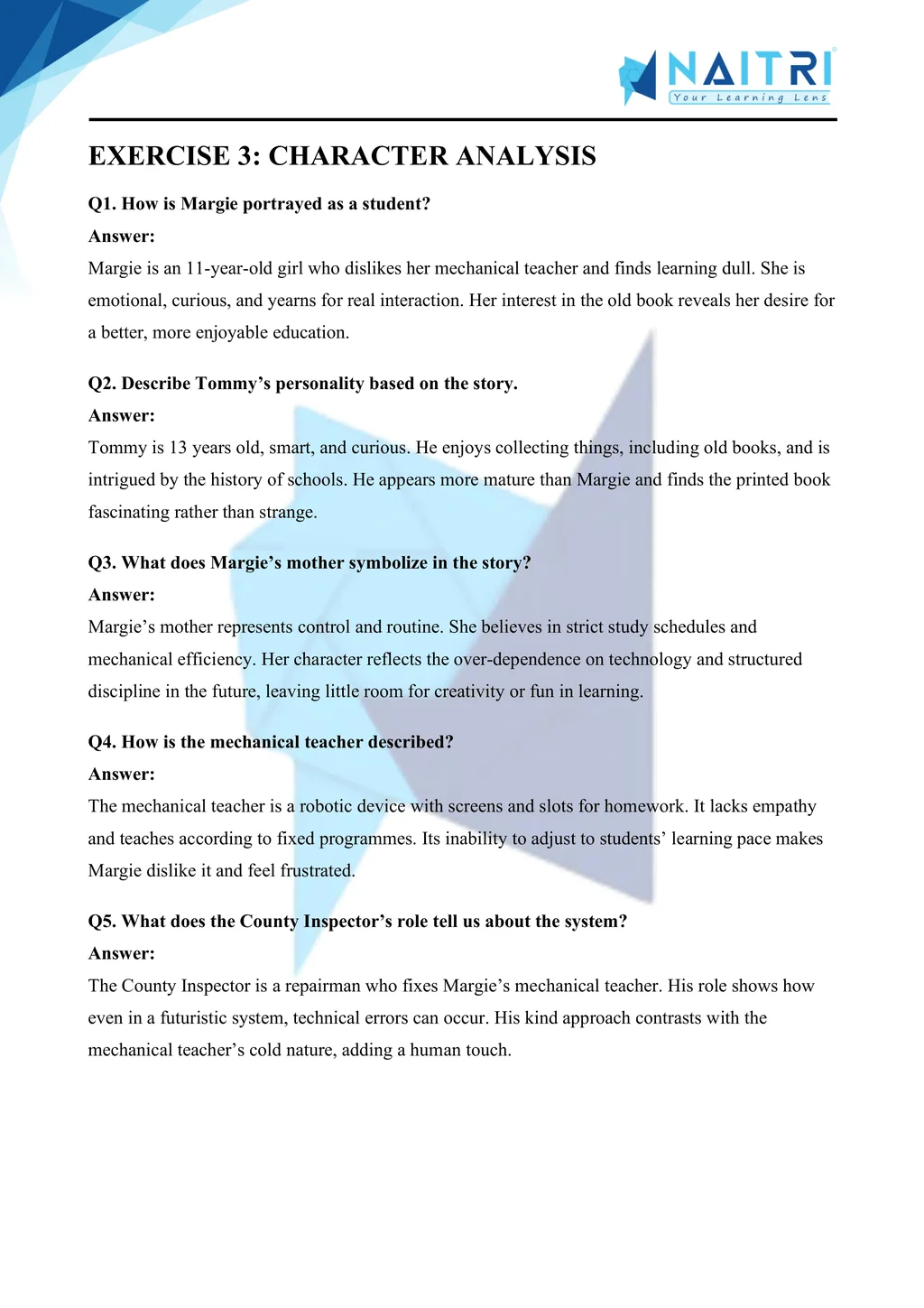
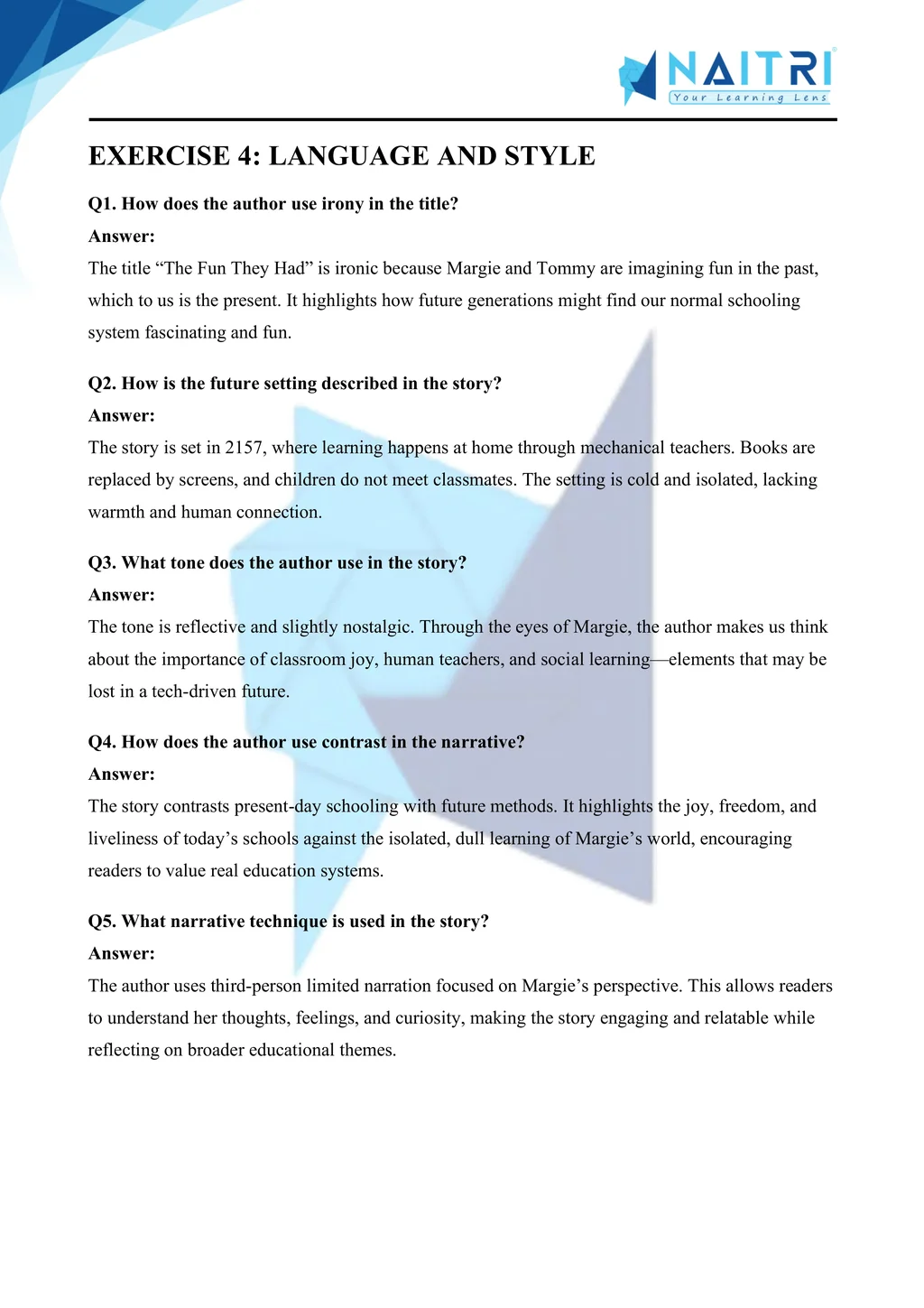
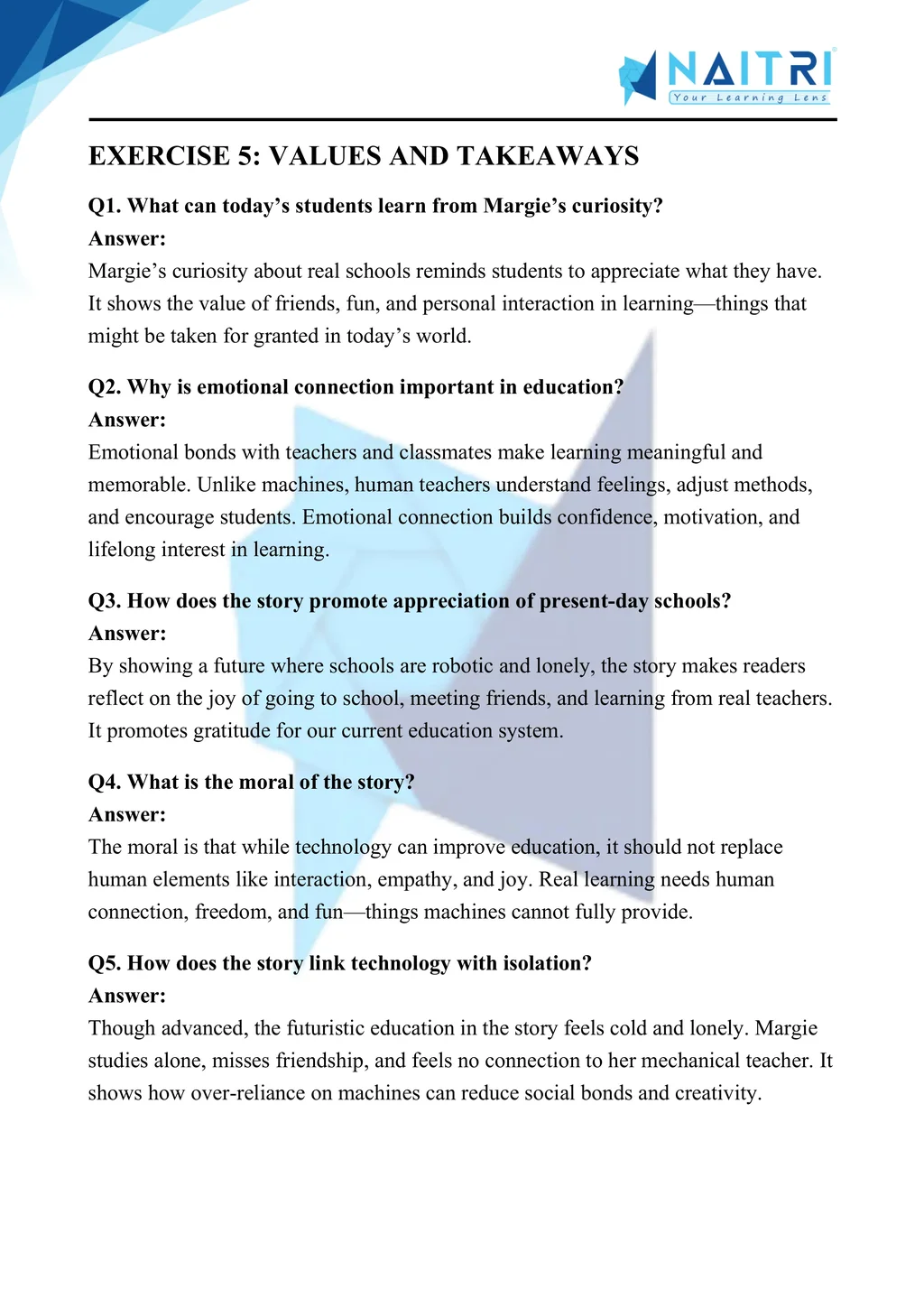
Experience English Like Never Before – With AR!
Understanding The Fun They Had is now more exciting and immersive! With the NAITRI App, you can explore engaging literature through Augmented Reality (AR). Travel to a futuristic classroom, explore robotic learning, and experience a digital school life — right in front of you. Our AR-powered lessons make learning interactive, 3D, and fun, helping you retain concepts better and enjoy every topic.



Visualize . Interact . Understand . The future of learning is here
The Fun They Had – Important Questions with Answers
What is the theme of “The Fun They Had”?
Answer: The theme highlights nostalgia for traditional schooling and the contrast between mechanized educationand human interaction in the future.Who are the main characters in the story?
Answer: The main characters are Margie and her friend Tommy, who discover and react to a printed book from the past.Why is Margie surprised by the printed book?
Answer: She is surprised because her “school” is mechanical with digital lessons. She cannot comprehend books with pages or sitting in a real classroom.How does Tommy react to the book?
Answer: Tommy is curious and amazed. He thinks the old school sounds more fun, with “real” teachers and classrooms instead of machines.What does the mechanical teacher represent?
Answer: The mechanical teacher represents automation, rigidity, and lack of personal warmth in futuristic education, highlighting the loss of human interaction.How are the schools of the past described?
Answer: They are described as vibrant and social, with groups of cheerful children sitting together and a teacher who can smile and laugh.Why does Margie consider old schools “fun”?
Answer: She feels they were fun because children could play, learn together, laugh, and have a human teacher to interact with personally.What is the writer’s tone in this story?
Answer: The tone is wistful and gently critical of overreliance on technology, reminding readers of the warmth lost in online-only education.Contrast Margie’s and Tommy’s schooling experiences.
Answer: Margie has lessons at home from a machine and no classmates. Tommy, although he likes the idea of old schools, also studies similarly.Why did the mechanical teacher make Margie cry?
Answer: It failed to accept her slow performance, showed no emotions, and punished her for wrong answers, leading to her crying silently.What does the story suggest about technology in education?
Answer: It suggests technology alone cannot replace social learning, emotional connection, and the dynamic environment of conventional classrooms.What does the title “The Fun They Had” mean?
Answer: It is ironic. The title reflects Margie’s longing and fascination with the idea of fun shared by students in past schools.What is the significance of the printed book?
Answer: The printed book is a symbol of the past, triggering curiosity, nostalgia, and awareness of human warmth lacking in their education.How would Margie feel if she attended an old school?
Answer: She would likely feel happy, carefree, and socially engaged, contrasting sharply with her isolated and regimented computerized setup.What point does the author make through the story?
Answer: The author points out that education should be human-centric, with interactive teachers and peers, not overly mechanized and isolating.What kind of education system is depicted in the story?
Answer: A personalised but isolated system where machines tailor lessons but fail to provide social learning or emotional understanding.How does the story reveal children’s attitudes to learning?
Answer: Margie and Tommy show that without companionship and interaction, learning becomes boring, although they recognize its structured nature.What contrast does the author highlight?
Answer: He contrasts mechanical precision with human warmth, showing that efficiency alone cannot fulfill emotional and social learning needs.What is the setting of the story?
Answer: A futuristic world, around the year 2157, with computerised homes and individualised learning machines replacing traditional schools.Why didn’t Margie enjoy reading the printed book?
Answer: Because she found it strange and outdated, lacking the feedback and grading she was used to from her mechanical teacher.What effect did school have on children in the past?
Answer: School was a place of laughter, curiosity, and group learning, promoting collaborative and joyful engagement in lessons.What message does the author leave for modern readers?
Answer: The message reminds modern readers of the importance of human connection, teachers, and peers, even in a technologically advanced world.Why is it ironic that Margie thinks old schools were “fun”?
Answer: It’s ironic because she only imagines it. She has never experienced that atmosphere, yet longs for something she’s never known.How does the story reflect on future education?
Answer: It warns that future education may sacrifice emotional development and social values unless balanced with technological advancements.Summarise the central idea of the story.
Answer: The central idea is that human interaction, shared learning, and emotional warmth are essential in education and cannot be replaced by machines alone.
The Fun They Had is a futuristic story imagining a world where children learn through mechanical teachers at home. When two students discover a printed book about old schools, they wonder about the joy of going to school together. The story raises questions about technology, education, and human connection, encouraging students to reflect on the value of traditional learning and social interaction.
Download Naitri App
Easy, Visual Learning — Right on Your Phone
Learn with Augmented Reality! The Naitri app makes CBSE and MP Board concepts interactive and fun — even in low-resource settings. Watch lessons, complete homework, take tests, and track progress — all in one place. Anytime. Anywhere.
Available on








